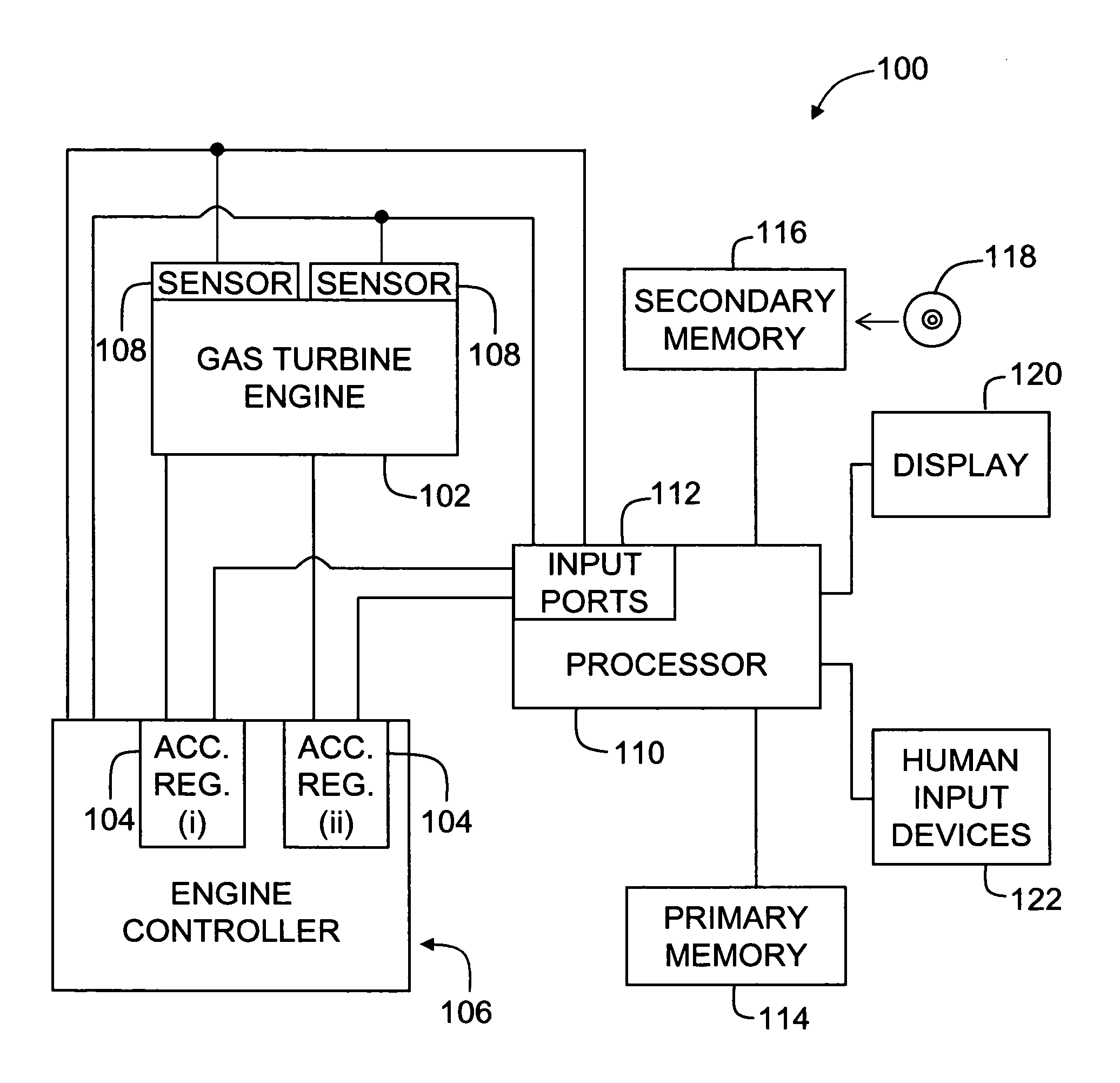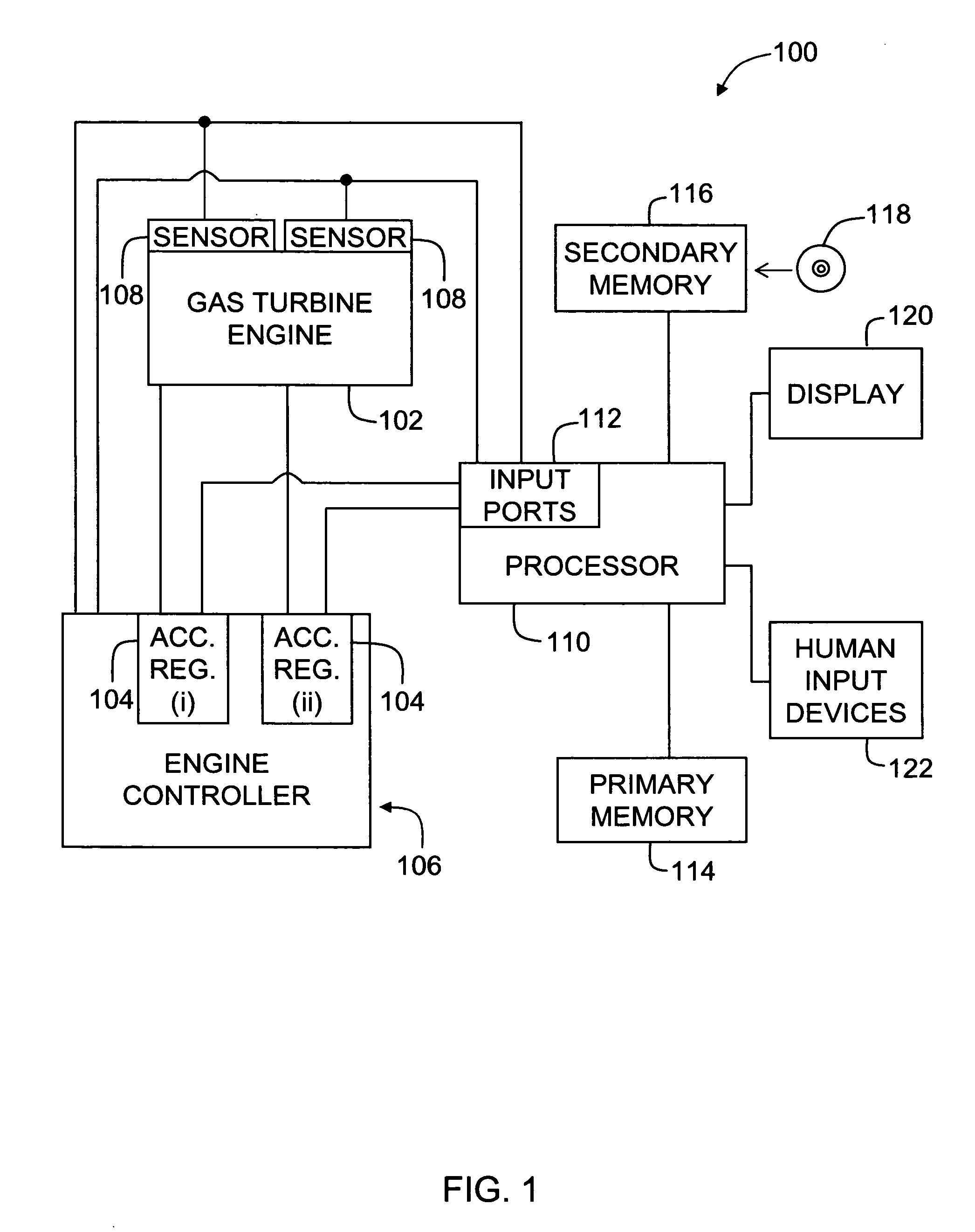Method and apparatus for assessing gas turbine acceleration capability
a technology of acceleration capability and gas turbine, which is applied in the direction of machines/engines, instruments, analogue processes for specific applications, etc., can solve the problems of slow acceleration rate, adversely affecting performance during takeoff and emergency procedures, and increasing the amount of fuel needed to meet this requiremen
- Summary
- Abstract
- Description
- Claims
- Application Information
AI Technical Summary
Benefits of technology
Problems solved by technology
Method used
Image
Examples
Embodiment Construction
[0015] Some configurations of the present invention provide technical effects including providing an alert to indicate that maintenance of a gas turbine engine should be performed. In addition, a method is provided to trend acceleration capability that is not dependent upon measuring changes in acceleration time is therefore advantageous for engines employing an N1 trajectory and / or N2 dot acceleration strategy. By trending of acceleration capability, potential poor performers are tracked, and an additional technical effect of some configurations of the present invention is to avoid operational events relating to decreases in available acceleration rates.
[0016] In some configurations and referring to the block diagram of FIG. 1, a gas turbine engine apparatus 100 includes a gas turbine engine 102, one or more engine regulators 104, and an engine controller 106. Engine 102, regulator(s) 104, and controller 106 are configured to employ either or both of a fan speed trajectory or core...
PUM
 Login to View More
Login to View More Abstract
Description
Claims
Application Information
 Login to View More
Login to View More - R&D
- Intellectual Property
- Life Sciences
- Materials
- Tech Scout
- Unparalleled Data Quality
- Higher Quality Content
- 60% Fewer Hallucinations
Browse by: Latest US Patents, China's latest patents, Technical Efficacy Thesaurus, Application Domain, Technology Topic, Popular Technical Reports.
© 2025 PatSnap. All rights reserved.Legal|Privacy policy|Modern Slavery Act Transparency Statement|Sitemap|About US| Contact US: help@patsnap.com



